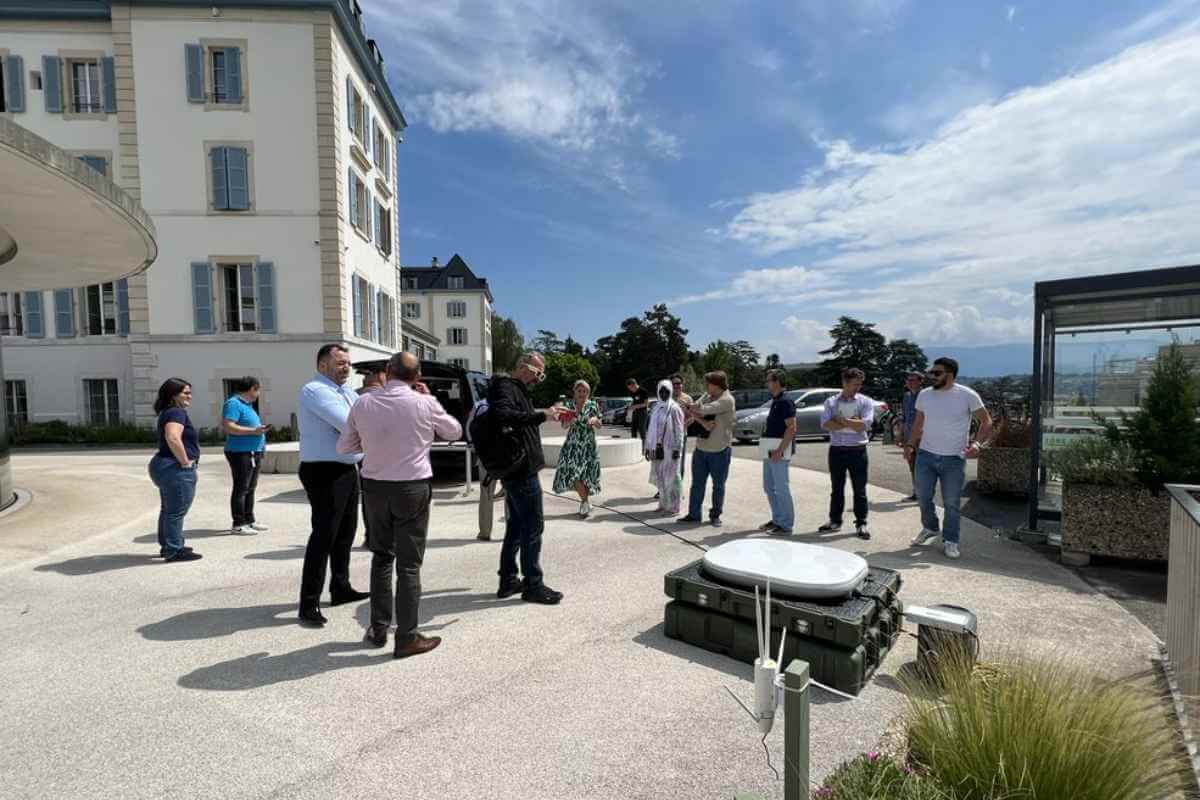
On Thursday, OneWeb announced that it showcased its low Earth orbit (LEO) satellite capabilities for humanitarian organisations to representatives from international humanitarian organisations. The event took place last month at the headquarters of the International Committee of the Red Cross in Geneva, Switzerland. According to OneWeb, this demonstration showcased OneWeb's ability to provide high-speed, low-latency communications through various user terminals, catering to different needs.
Also Read: OneWeb and IP Access International Partner to Deliver High-Speed Broadband Across the US
User Terminals for Varied Needs
The demonstration highlighted two key user terminals:
Kymeta Hawk u8 User Terminal: This terminal is designed for fixed applications and can be mounted on movable vehicles and vessels. It offers a solution for delivering high-speed, low-latency communications in various environments.
INSTER Human-Portable Flat Panel: The INSTER terminal is designed for increased portability and can be easily carried in a backpack. This is particularly useful in situations where traditional cellular or terrestrial networks are unavailable, such as in natural disaster and crisis missions.
"Movability is a vital aspect of natural disaster and human crisis missions where no cellular or terrestrial-based networks are available, and these user terminals in OneWeb's product line are well placed to support critical comms in emergency response situations," said OneWeb.
Also Read: BT and OneWeb Deliver High-Speed Satellite Connectivity to Lundy Island
OneWeb said these user terminals provide vital communication solutions for emergency response situations, where connectivity can be critical for effective decision-making and coordination among humanitarian teams. The ability to maintain connectivity in uncertain and challenging environments can greatly enhance operational capabilities.
Speed, Reliability, and Adaptability: OneWeb's Showcase
OneWeb said for customers, its offering provides a secure and agile low-earth-orbit communications plan. OneWeb offers primary, alternate, contingency, and emergency (PACE) connectivity options, ensuring that users have reliable communication even if specific networks become disrupted or unavailable.
During the demonstration, OneWeb successfully showcased its capabilities by streaming 4K video feeds, running applications like Teams and Google Earth, and achieving download speeds of up to 150 Mbps, upload speeds of up to 29 Mbps, and low latency levels as low as 70ms.
OneWeb Director of Government conducted the demo and emphasized the importance of connectivity in uncertain and challenging environments. OneWeb highlighted the flexibility of its ground terminals, which can cater to different needs, whether mounted on vehicles or carried by individuals.
Also Read: OneWeb, Connecta Partner to Boost Broadband Connectivity in the US and Caribbean
"Teams could be operating where the ground has been destroyed or is unstable, so wheels are not an option. In this situation, terminals need to be carried in, and that's where the OneWeb family of ground terminals offers flexibility for these differing needs - a flat panel like the Kymeta works well on a vehicle, but when that isn't viable the INSTER, which is lightweight, is an ideal human-portable solution," stated OneWeb.
The feedback from the event was highly positive, indicating that OneWeb's offering aligns well with the needs of organisations like the Red Cross, said OneWeb. The ability to operate multiple service plans on a single device adds to the flexibility and accessibility of the offering, allowing organizations to allocate budgets effectively and meet various communication requirements.
Also Read: OneWeb Expands Connectivity Services in Europe and US
Overall, the successful demonstration underscores the potential of LEO satellite technology to provide critical communication solutions for humanitarian and emergency response efforts, contributing to faster and more effective operational capabilities in challenging scenarios.















